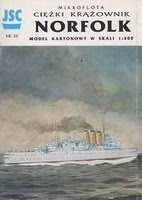
First deployed in 1983, the versatility of HUMVEE is reflected in the AM General trademark acronym that is its name, High Mobility Multipurpose Wheeled Vehicle. Employing a V8 diesel engine capable of 150hp output as well as an advanced 4WD system, automatic transmission, and power steering, the Humvee demonstrated incredible mobility and versatility during its deployment in the Panama Conflict, the Gulf War, as well as conflicts in Bosnia and Kosovo. Depending on its variation and employment type, the Humvee can serve as a cargo or troop transport vehicle, weapon employing vehicle, TOW anti-tank missile or ground-to-air missile employing vehicle, rescue vehicle, and more. The M0125 could be fitted for armament (M2 or M60 machine guns, as well as MK.19 grenade launchers), but unlike some of its armed predecessors, the M1025 featured a metal roof in place of a canvas roof and door. Currently, this vehicle plays an indispensable role in the U.S. Military. Tamiya presents a 1/35 scale model of the M1025 Humvee using the latest in slide molding technology to render a kit with never before seen precision and authenticity. Door, rear hood, and roof hatch come as separate parts to allow for various assembly options. Parts for two types of vents on front hood and side mirrors, as well as parts for replication of air-intake and muffler layoff characteristically employed by the Humvee deployed with the US Marines are also included in the kit. Parts for recreation of Mk.19 grenade launcher, M2 heavy machine-gun (newly molded), and ammunition cases are featured in kit. Rubber tires enhance realism down to the tread marks. Two figures are included- driver and gunner with full-gear, helmet, and detailed facial expressions.
Download (depositfiles.com)














































